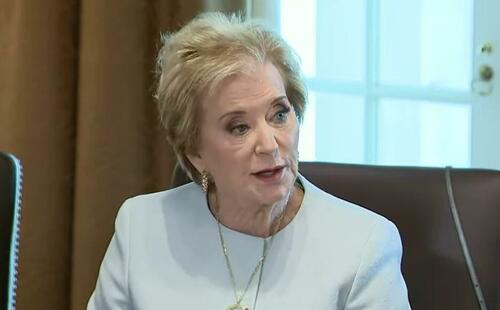"We're Going To Start Getting It Back": Trump Admin Begins Collecting On Student Loans In Default
Last week we highlighted the next economic shock; a student loan default wave that could cause a $63 billion hit to GDP.
And here it comes. During Wednesday's Cabinet meeting, Education Secretary Linda McMahon said "We're going to start getting it back," adding "For those people who have borrowed money and have not been paying -- that's just not to be punitive, there are many ways that they can go online to understand how they can get back into the right payment structure. Because when they're in default, they can't buy a house, they can't buy a car, their credit scores go down." h/t Jennifer Jacobs
As we reported last week (full note available to premium subscribers), student-loan delinquencies began climbing after the pandemic-era forbearance on repayment ended in September 2023. The Biden administration allowed a year for payments to fully ramp back up, which temporarily suppressed delinquency rates. Now, though, missed payments are crossing the 90-day threshold and showing up on borrowers’ credit reports.
* * *
Support independent media. Grab a ZeroHedge hat at the ZH Store, or buy any 2 bags of coffee and receive a free ZeroHedge Tumbler!
The New York Fed estimates 15.6% of federal student-loan balances — more than $250 billion — were past due by the end of the ramp-up period, affecting 9.7 million borrowers. As these delinquencies hit credit reports, borrowers face steep declines in their credit scores and, more importantly, sharply reduced access to credit.
That said, delinquent borrowers could still enroll in income-driven repayment plans offered by the Department of Education, and the scale of past-due loans may have shifted since the end of the on-ramp period. Some borrowers who were past due may have come back into compliance since.
Overall, if 9.7 million borrowers default and face declining credit scores, BBG estimates a drag on annual PCE spending of 0.1% point to 0.3%. In the worst-case scenario, it could reduce PCE spending growth by as much as 0.4% by year-end... an outcome that is extremely deflationary, just in case Jerome Powell is still debating whether or not to pull the plug on rate cuts.




